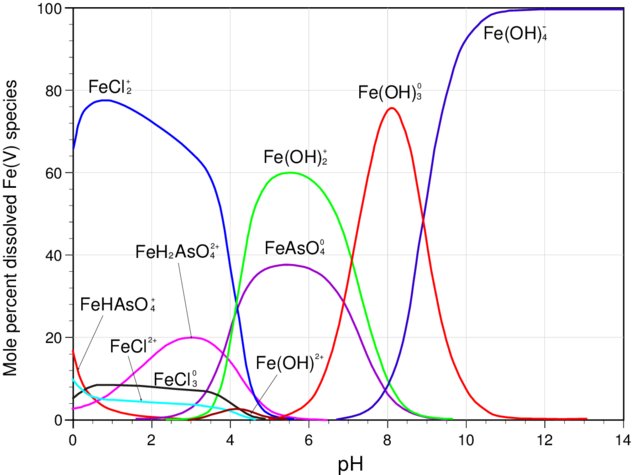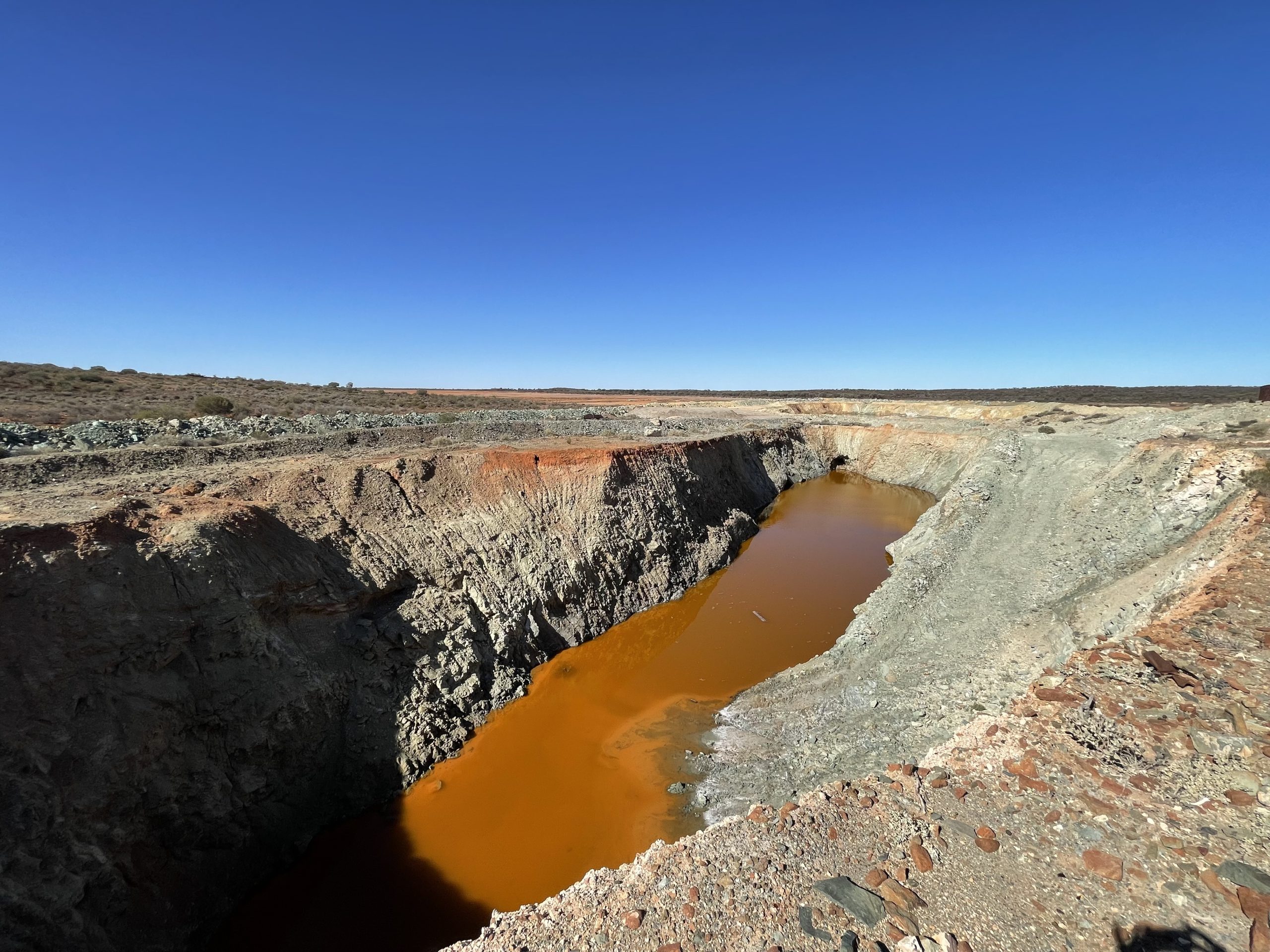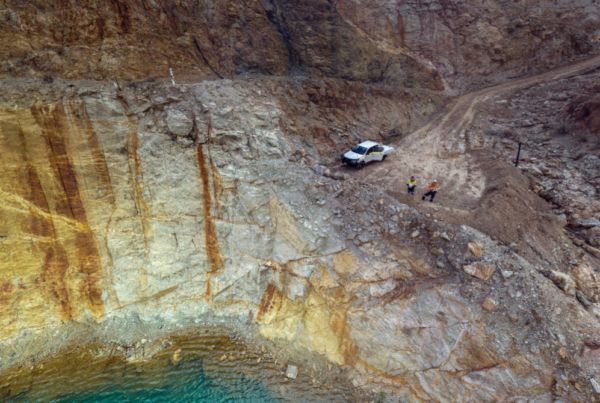Pit lakes often present poor water quality as a key hazard
Pit lakes are characterised by their frequent poor water quality, due to elevated concentrations of contaminants of potential concern (COPCs) which presents hazards to organisms that may contact their waters. However, one of the greatest risks of pit lake legacies is their potential to degrade surface and groundwater if COPCs are transported to these receiving environments. COPCs from pit lake can also contaminate natural waterbodies and aquifers leading to pollution which impacts their water quality values.
What COPCs are typical for pit lakes?
Which CPOCs that might affect pit lake water quality will depend upon pit lake chemistry; on potential end use values, and on potential receptors. Unless these factors are all defined (even loosely) in advance, the suite of COPCs collected and analysed for is unlikely to suit the purposes of the sampling program (Gammons 2009, 2011).
Metals(loids)
Often called “metals”, this category of COPC includes traditionally considered COPCs such as “heavy metals” lead, zinc, cadmium, mercury, etc. However, the term “metals”, is a misleading misnomer because both metalloids (such as arsenic) and non-metals (such as selenium) (Duffus 2002) may be present as COPC. Metal(loid) concentrations are typically elevated under acidic and metalliferous drainage (AMD) influence. However, many COPC concentrations may still be elevated even when pit lake water quality is circum-neutral, for example zinc and manganese. Furthermore, many COPCs may show high solubility at neutral or even alkaline pH (Wei et al. 2019), when pit lake water and other mine water quality hazards are traditionally considered low. Arsenic (Zhu and Merkel 2001) is a good COPC example of this non-acidic solubility, whereby As species may be higher at neutral pH.
 Arsenic solubility (as arsenate) can be high at circum-neutral pH (Zhu & Merkel 2001).
Arsenic solubility (as arsenate) can be high at circum-neutral pH (Zhu & Merkel 2001).
Seemingly harmless metals may also be a COPC depending on the synergies they demonstrate with other substances in the pit lake water. For example, magnesium can be toxic in low calcium waters (Van Dam et al. 2010, Mooney et al. 2020).
Non-metallic inorganics
Non-metallic inorganics have frequently been omitted from pit lake water quality analytical suites or, when recorded, not assessed for their significance as a COPC hazard. Elevated nitrate concentrations are a key example of a non-metallic inorganics that has often been overlooked as a potential pit lake water quality COPC hazard. Mine waters, including pit lakes, have presented potential anthropogenic sources of nitrate contamination to the environment for half a century or more (Pettyjohn, 1975). Elevated nitrate concentrations can be a hazard through direct toxicity and through contributing to hazardous algal blooms (HABS) (Bijay & Craswell, 2021).
Non-metallic inorganics also often present further hazards as salinity.
Salinity
The sum of all dissolved substances can present a salinity stress to organisms; whether they drink pit lake water, are exposed to it directly by swimming in it, or through pit lake water being discharged into their surface or groundwater receiving environments. Salinity may be elevated through weathering and dissolution of catchment materials (especially sodic soils), through development of AMD (even if the drainage is then neutralised), and from evapoconcentration; especially in terminal pit lakes.
While all dissolved substances contribute toward salinity as total dissolved substances (TDS), some COPC can contribute toward both indirect toxicity through salinity, and also through direct toxicity as well. High sulfate concentrations are a good example of a key salinity COPC, often occurring in both acidic or neutral mine waters and contributing to both saline and direct toxicities (van Dam et al. 2014).
Organic compounds
Although organic compounds (such as hydrocarbons) from vehicles, plant and other machinery and other sources are common in operational mines of all types, whether these COPC present in the mine’s pit lakes will depend on site water management. Namely, is there a transport pathway from the organic COPC source to the lake.
The globally unusual oil sand pit lakes pose a broad suite of residual organic compounds of varying molecular mass and ranging from labile to refractory. For example, from acids such as naphthenic acids, to benzene, hydrocarbons, and to residual bitumen itself. Some of these organic compounds can be acutely or chronically toxic to aquatic life (Morandi et al. 2020). However, pit lakes from more common hard rock and coal mines will rarely present organic COPCs as hazards to pit lake water quality. Nevertheless, many companies routinely collect expensive and complex organic COPC datasets for pit lake water quality assessment, where detection limits and dose-response relationships render the low concentrations encountered of little utility for pit lake water quality planning.
COPC assessment of organic compounds, typically below detection limits in pit lake waters, provides little useful information for their planning.
 How assessment of COPCs is often undertaken
How assessment of COPCs is often undertaken
Pit lake COPC data are typically received from water quality samples taken from different parts of the pit lake. These may be simply screened against “default” water quality guidelines e.g., ANZG (2018). Indeed, some laboratories will even provide automatically screened results in their ESDAT (environmental data management, analysis and reporting software) file reports. However, such screening is frequently inaccurate and may misdirect understandings of what hazards COPC represent from pit lake water quality.
The application of water quality guidelines to hydrochemical data requires consideration against the pit lake’s water quality values (Barmuta et al. 2001), which ideally are defined by closure criteria (Young et al. 2019). But for most pit lakes, even closed sites, post mining land use, water quality values and associated criteria are often still undefined. This therefore means that a decision is being implicitly made about post mining end uses for the pit lake in question, on behalf of both internal company and external stakeholders, but without their engagement. A decision that is likely to be wholly wrong given the absence of these important inputs (Swanson 2011). Instead, COPC assessment of water quality data should account for what use(s) the pit lake currently might and might reasonably be used for in the foreseeable future, by humans, livestock and wildlife. Assessment should be across all relevant guidelines and associated detail e.g., aquatic ecosystem protection; freshwater or marine and/or recreational guidelines; primary or secondary contact recreation, etc. And for the entire range of water quality types from void completion and lake filling begins, to the end of the closure time scale; be it hundreds or thousands of years.




